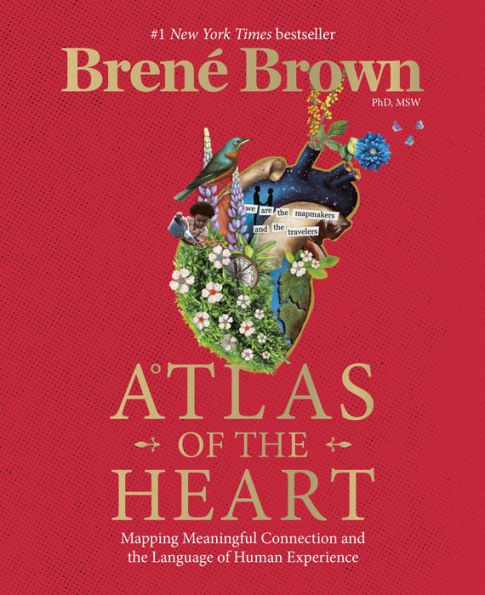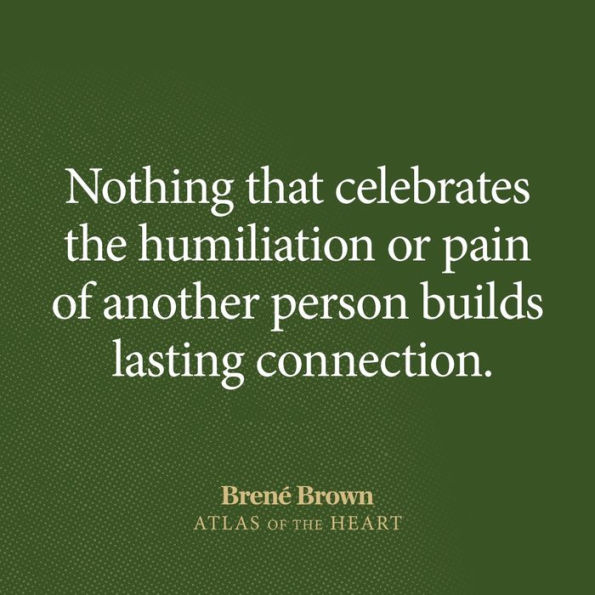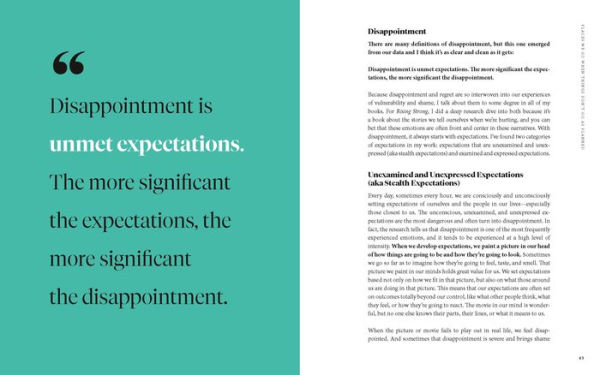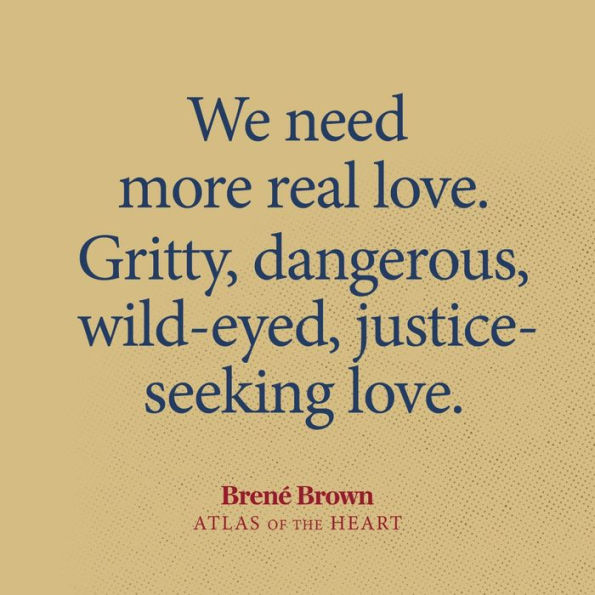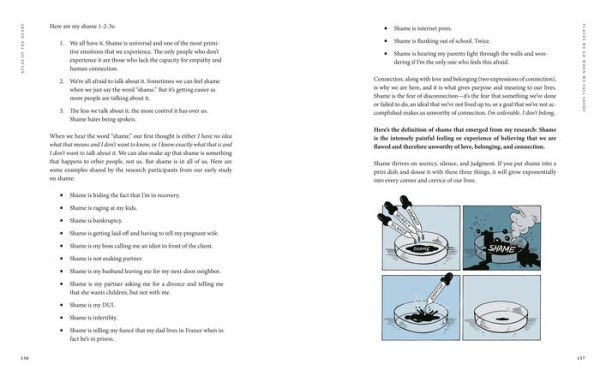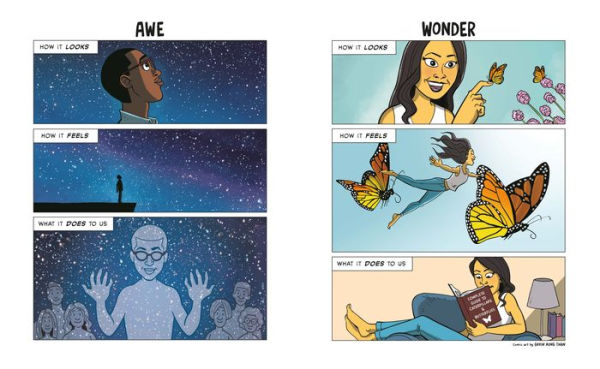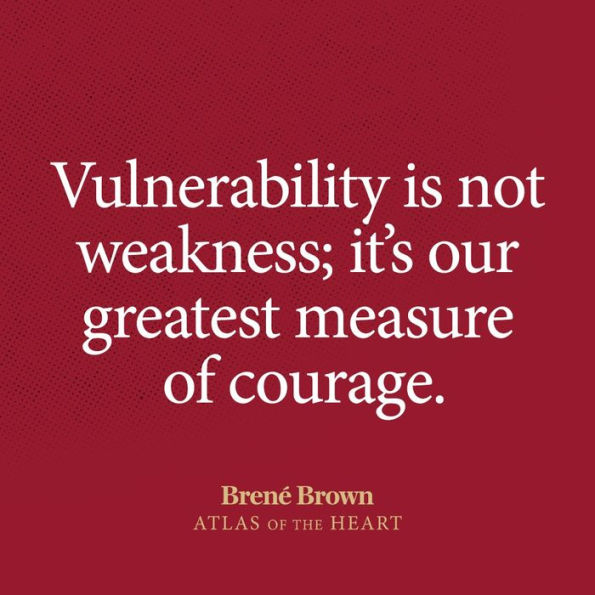#1 NEW YORK TIMES BESTSELLER • In Atlas of the Heart, Brené Brown writes, “If we want to find the way back to ourselves and one another, we need language and the grounded confidence to both tell our stories and be stewards of the stories that we hear. This is the framework for meaningful connection.”
Don’t miss the five-part Max docuseries Brené Brown: Atlas of the Heart!
In Atlas of the Heart, Brown takes us on a journey through eighty-seven of the emotions and experiences that define what it means to be human. As she maps the necessary skills and an actionable framework for meaningful connection, she gives us the language and tools to access a universe of new choices and second chances—a universe where we can share and steward the stories of our bravest and most heartbreaking moments with one another in a way that builds connection.
Over the past two decades, Brown’s extensive research into the experiences that make us who we are has shaped the cultural conversation and helped define what it means to be courageous with our lives. Atlas of the Heart draws on this research, as well as on Brown’s singular skills as a storyteller, to show us how accurately naming an experience doesn’t give the experience more power—it gives us the power of understanding, meaning, and choice.
Brown shares, “I want this book to be an atlas for all of us, because I believe that, with an adventurous heart and the right maps, we can travel anywhere and never fear losing ourselves.”
1140074986
Don’t miss the five-part Max docuseries Brené Brown: Atlas of the Heart!
In Atlas of the Heart, Brown takes us on a journey through eighty-seven of the emotions and experiences that define what it means to be human. As she maps the necessary skills and an actionable framework for meaningful connection, she gives us the language and tools to access a universe of new choices and second chances—a universe where we can share and steward the stories of our bravest and most heartbreaking moments with one another in a way that builds connection.
Over the past two decades, Brown’s extensive research into the experiences that make us who we are has shaped the cultural conversation and helped define what it means to be courageous with our lives. Atlas of the Heart draws on this research, as well as on Brown’s singular skills as a storyteller, to show us how accurately naming an experience doesn’t give the experience more power—it gives us the power of understanding, meaning, and choice.
Brown shares, “I want this book to be an atlas for all of us, because I believe that, with an adventurous heart and the right maps, we can travel anywhere and never fear losing ourselves.”
Atlas of the Heart: Mapping Meaningful Connection and the Language of Human Experience
#1 NEW YORK TIMES BESTSELLER • In Atlas of the Heart, Brené Brown writes, “If we want to find the way back to ourselves and one another, we need language and the grounded confidence to both tell our stories and be stewards of the stories that we hear. This is the framework for meaningful connection.”
Don’t miss the five-part Max docuseries Brené Brown: Atlas of the Heart!
In Atlas of the Heart, Brown takes us on a journey through eighty-seven of the emotions and experiences that define what it means to be human. As she maps the necessary skills and an actionable framework for meaningful connection, she gives us the language and tools to access a universe of new choices and second chances—a universe where we can share and steward the stories of our bravest and most heartbreaking moments with one another in a way that builds connection.
Over the past two decades, Brown’s extensive research into the experiences that make us who we are has shaped the cultural conversation and helped define what it means to be courageous with our lives. Atlas of the Heart draws on this research, as well as on Brown’s singular skills as a storyteller, to show us how accurately naming an experience doesn’t give the experience more power—it gives us the power of understanding, meaning, and choice.
Brown shares, “I want this book to be an atlas for all of us, because I believe that, with an adventurous heart and the right maps, we can travel anywhere and never fear losing ourselves.”
Don’t miss the five-part Max docuseries Brené Brown: Atlas of the Heart!
In Atlas of the Heart, Brown takes us on a journey through eighty-seven of the emotions and experiences that define what it means to be human. As she maps the necessary skills and an actionable framework for meaningful connection, she gives us the language and tools to access a universe of new choices and second chances—a universe where we can share and steward the stories of our bravest and most heartbreaking moments with one another in a way that builds connection.
Over the past two decades, Brown’s extensive research into the experiences that make us who we are has shaped the cultural conversation and helped define what it means to be courageous with our lives. Atlas of the Heart draws on this research, as well as on Brown’s singular skills as a storyteller, to show us how accurately naming an experience doesn’t give the experience more power—it gives us the power of understanding, meaning, and choice.
Brown shares, “I want this book to be an atlas for all of us, because I believe that, with an adventurous heart and the right maps, we can travel anywhere and never fear losing ourselves.”
13.99
In Stock
5
1

Atlas of the Heart: Mapping Meaningful Connection and the Language of Human Experience
336
Atlas of the Heart: Mapping Meaningful Connection and the Language of Human Experience
336Related collections and offers
13.99
In Stock

Product Details
| ISBN-13: | 9780399592577 |
|---|---|
| Publisher: | Random House Publishing Group |
| Publication date: | 11/30/2021 |
| Sold by: | Random House |
| Format: | eBook |
| Pages: | 336 |
| Sales rank: | 17,523 |
| File size: | 52 MB |
| Note: | This product may take a few minutes to download. |
About the Author
From the B&N Reads Blog







